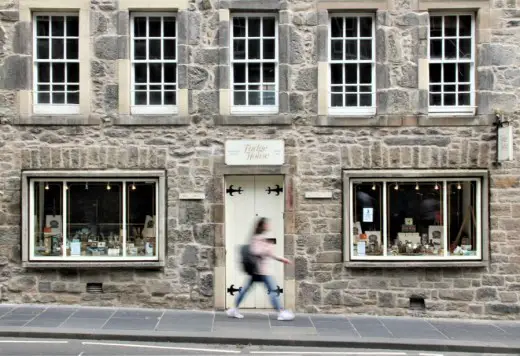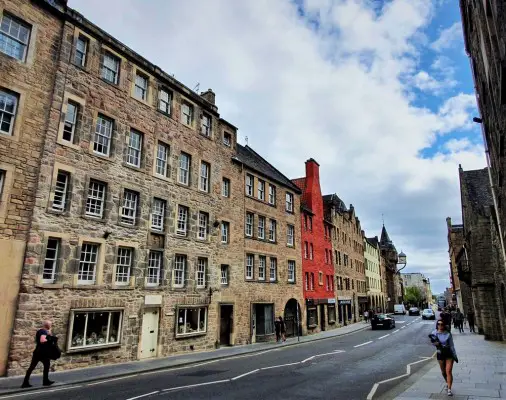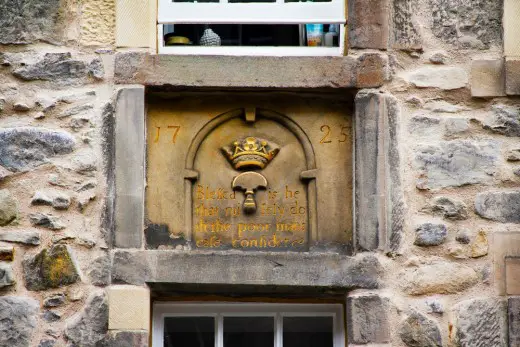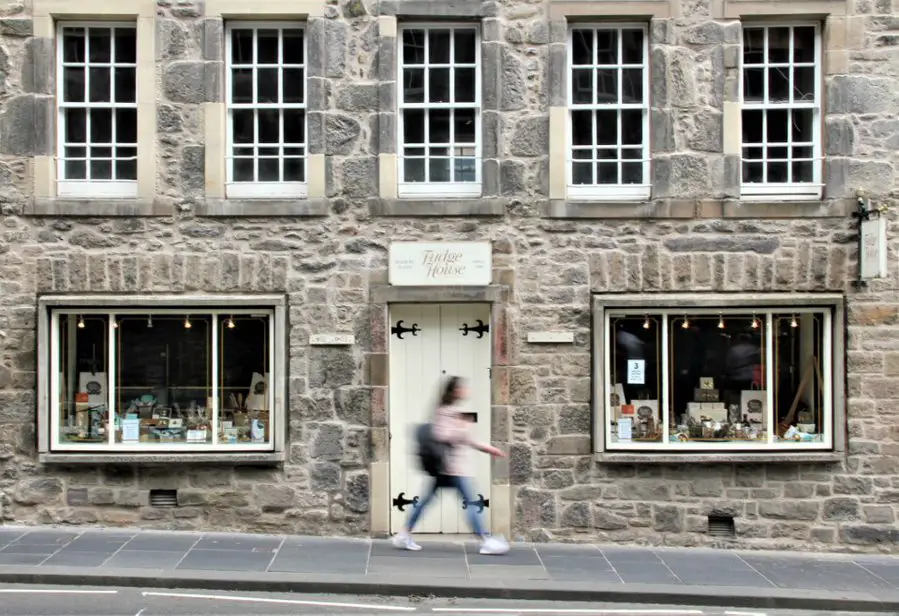Canongate Historic Tenements, Edinburgh World Heritage Work, Scottish Capital Old Town Architecture News
Canongate Historic Tenements Conservation
4 June 2021
Local Edinburgh residents living in the Canongate area of the Old Town will benefit from a range of conservation and energy efficiency improvements that are on track to reduce energy consumption and carbon emissions by over 50%:
Canongate Housing Development Edinburgh
Canongate Historic Tenements Conservation – Edinburgh World Heritage
25 Sep 2020
Historic Canongate tenements returned to former glory
Edinburgh, Friday 25th of September 2020 – Major conservation work, led by Edinburgh World Heritage, has just been completed on the last of three historic tenements on the Canongate which comprise 16 residential dwellings and 5 shops. Work was funded by the charity’s Conservation Funding Programme, which is supported by Historic Environment Scotland. Edinburgh World Heritage also provided expertise, advice and support to the residents and shopowners throughout the project.
195 – 197 Canongate Edinburgh building facade:

photo © Edinburgh World Heritage
Also known as cordiner’s land, 195-197 Canongate is a 17th century tenement, which, together with its neighbours, embodies an important part of the Old Town, part of the Old and New Towns World Heritage Site. The cordiners were tanners, curriers (people who prepared leather for sale) and shoemakers who derived their title from the French “Courdouanier” meaning “of Cordova”, the source of the finest leather at the time. In 1825, they rebuilt the front half of the tenement and it became their meeting-place. The cordiners would also have sold their goods in the premises on the ground floor of the tenements, known as ‘luckenbooths,’ a purpose these tenements retain to this day. Throughout this period, the Canongate was its own royal burgh, established by King David I in 1128, and independent of Edinburgh until the two were united in 1865.
The three tenements 195-197, 183-187 (Bible Land) and 189 and 191 Canongate:

photo © Edinburgh World Heritage
In the mid-20th century, these three tenemant buildings were part of the substantial restoration of the historic Tolbooth area spearheaded by city architect Robert Hurd. His proposals respected the scale and nature of existing buildings and retained much of the original fabric of the buildings.
Further conservation work, grant-aided by Edinburgh World Heritage, was completed in 2015 to 183-187 Canongate, a 300-year-old tenement, also known as ‘Bible Land’ after the carved stone cartouche on its frontage, and in 2019 to 189 and 191 Canongate, probably best identified by its striking red lime harling and limewash, reinstated as part of its conservation.
The stone cartouche on 195-197 Canongate:

photo © Edinburgh World Heritage
Today, these tenements represent nearly 1000 years of Scotland’s history.
The restoration and conservation of 195-197 Canongate, a five-storeyed, six-bayed block, was carried out by David Willis at CLWG Architects, and retained the traditional features of the tenement. These include repairs to the rubble and dressed stonework, timber-framed multi-paned sash and case windows and the carved panel in one of the central bays between the first and second floors which displays the emblem of the cordiners (shoemakers). Additional work included repairing chimney heads and gables, overhauling roofs, gutters and flashings, repairing the south external masonry wall, removing loose paint and re-painting the north elevation, and repairing rainwater goods.
Brenda Clark, the representative of the residents of 185 Canongate, said “Edinburgh World Heritage’s support and expertise in the field of restoration of historic buildings was invaluable. We were delighted to see our neighbours in the tenements next door follow suit and the rear elevation of the buildings look very impressive. We are now trying to persuade our neighbours in the adjoining building overlooking Gladstone Court to tackle the repairs to their building and would encourage them to approach Edinburgh World Heritage for their help and advice.”
Ray Disotto, owner of the Fudge Shop on the ground floor of 195-197 Canongate said “The generous grant offer by Edinburgh World Heritage made this work possible, and it has revived the look of the building which now blends in with rest of the Royal Mile. I’m sure it will improve business for all in the street.”
Christina Sinclair, Director of Edinburgh World Heritage, said: “The Conservation Funding Programme provides invaluable support to residents and owners of traditional buildings in and around the World Heritage Site to help them organise, to provide them with expertise, and to offer practical financial support, from beginning to end. Following the success of the conservation work at 195-197 Canongate, we are exploring how to better engage communities in areas outside of the World Heritage Site.”
City of Edinburgh Council Planning Convener Councillor Neil Gardiner said: “As a Planning Authority, we’re ultimately the guardians of our historic built heritage and our listed buildings guidance works to protect period properties right across the city.
“We’re very lucky to have such unique buildings in all corners of our Capital – including of course within our World Heritage Sites – and Edinburgh World Heritage provides invaluable support to keep them secure, sustainable and well looked after. As a City, we all need to play our part in making sure the listed buildings we live in can still be occupied and enjoyed for generations to come, and Edinburgh World Heritage regularly engages with property owners and tenants to preserve Edinburgh’s historic built environment.
“The conservation work carried out in the Canongate is a perfect example of a community working together. I hope other property owners see the incredible difference it makes and feel compelled to follow suit.”
About Edinburgh World Heritage
We are an independent charity with the aim of ensuring that the city’s World Heritage status is a dynamic force that benefits everyone. Our mission is to connect people to their heritage in everything we do – whether through the conservation of historic buildings, delivering improvements to the public realm, or engaging people directly with the rich heritage of their city.
About the Conservation Funding Programme
Edinburgh World Heritage’s Conservation Funding Programme is funded by Historic Environment Scotland, and supports the conservation of buildings and public spaces in and around the Old and New Towns of Edinburgh World Heritage Site, helping to retain the authenticity and integrity of our remarkable historic city.
Image resources © Edinburgh World Heritage
Edinburgh World Heritage Climate Emergency Manifesto images / information received 180920
Edinburgh Architecture
Design: CDA and Gareth Hoskins Architects
photo © Adrian Welch
St Andrew Square Building
image of the development
St James Quarter
Comments / photos for the Canongate Historic Tenements Conservation page welcome



